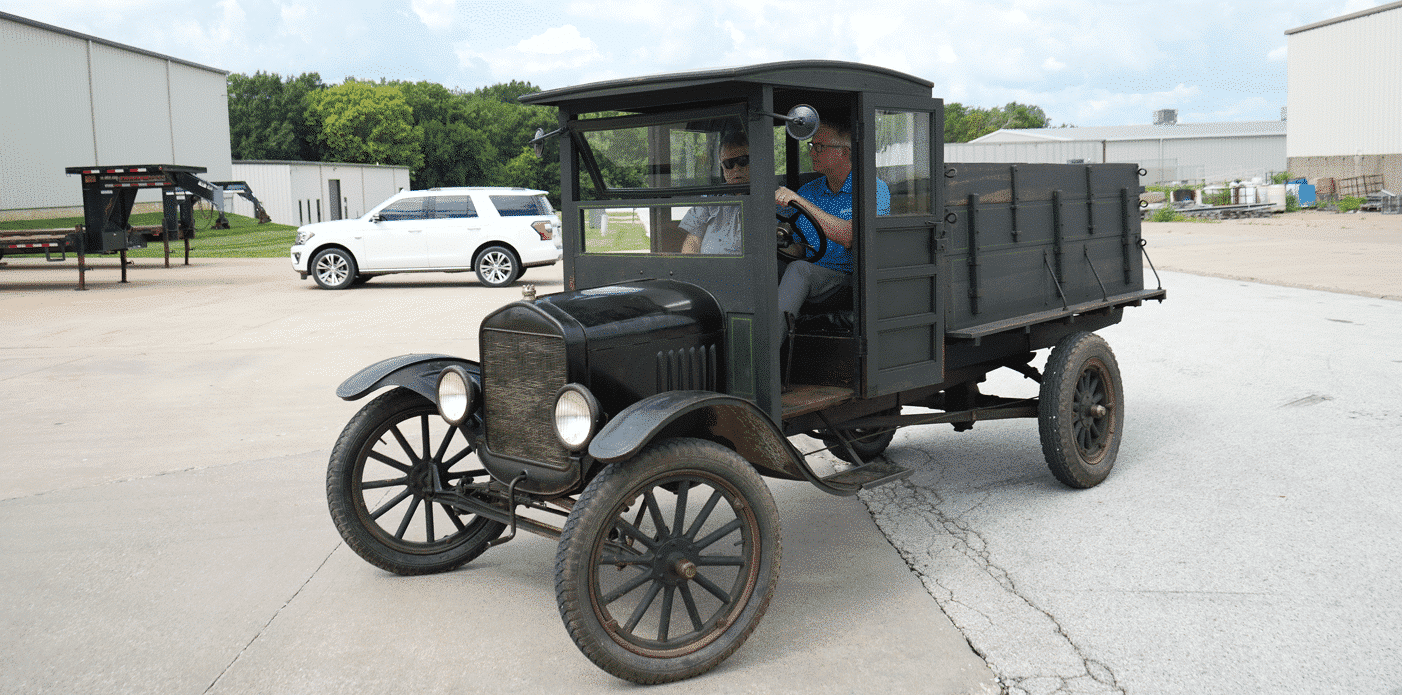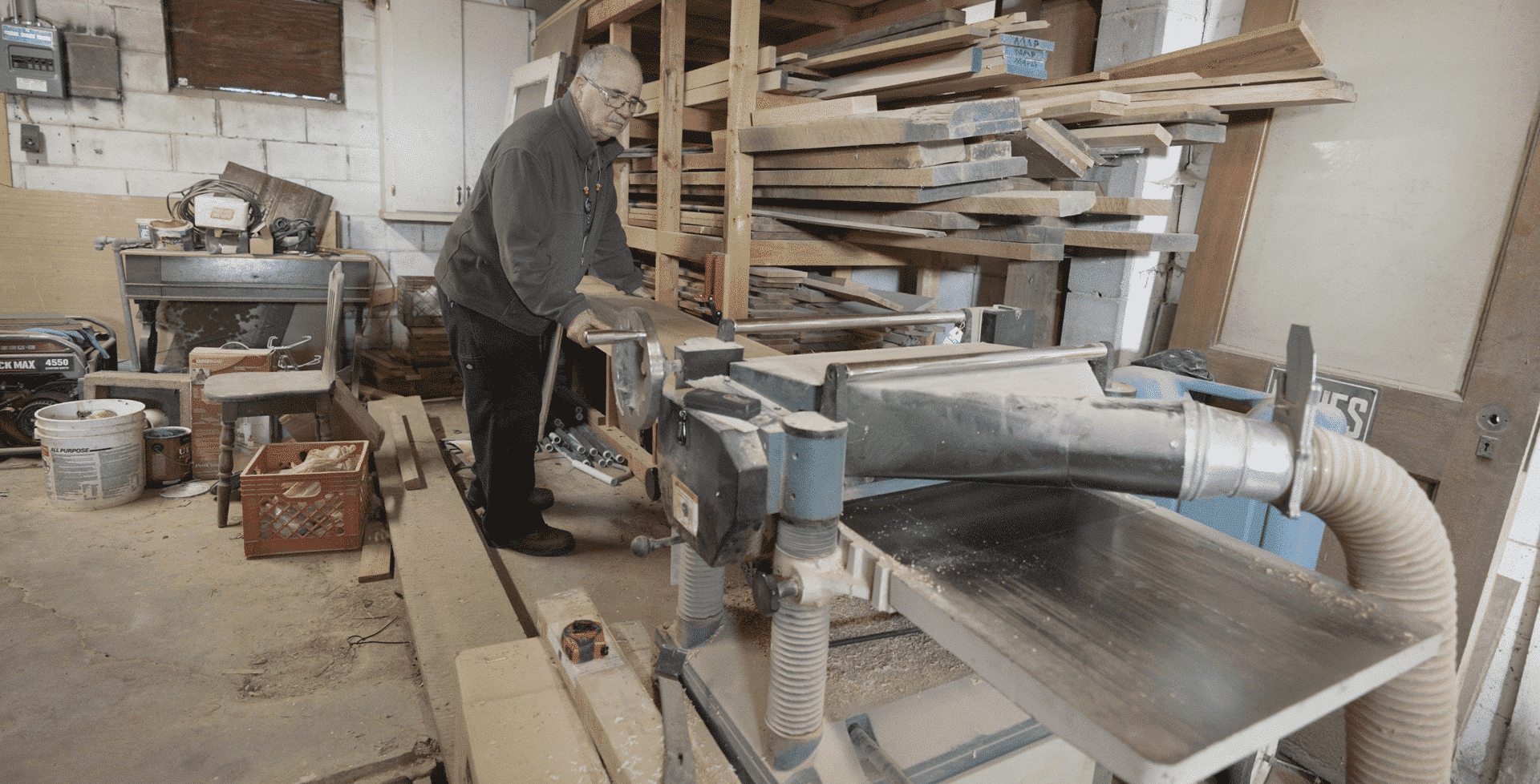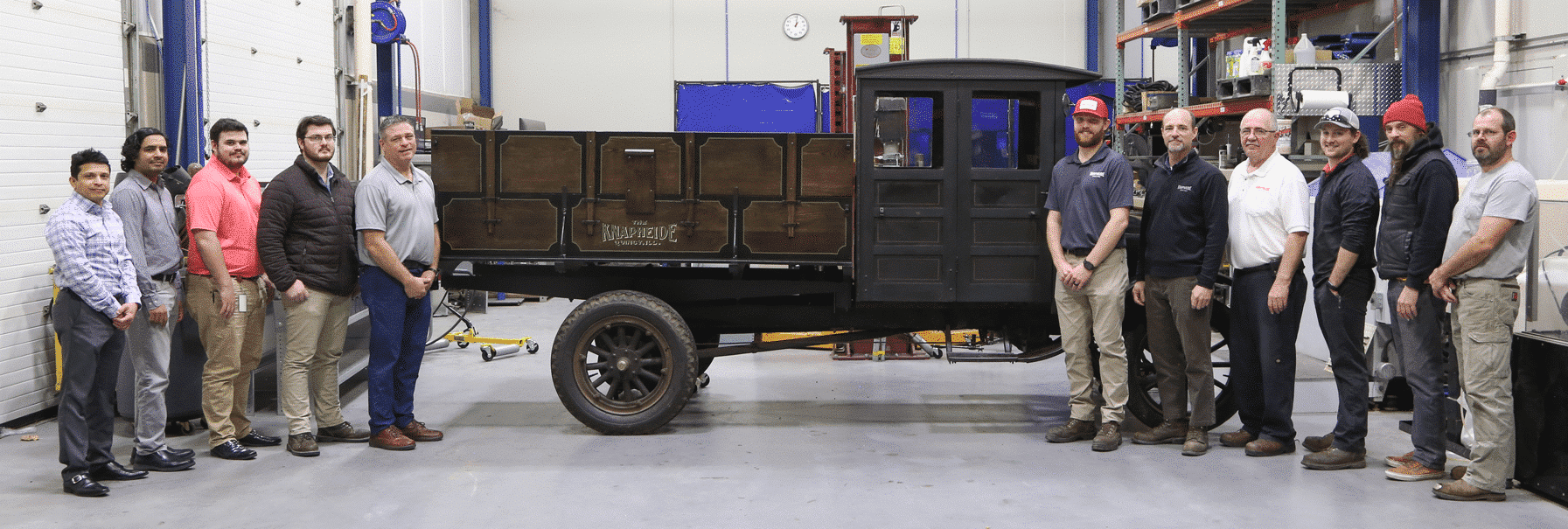July 25, 2023
SHARE
Automobiles revolutionized transportation and, as a result, left wagon-making companies with two options to move forward: adapt or fail. Many wagon makers fell short and had to close their doors, but those at Knapheide fought to keep the company going, refusing to accept defeat easily. So, Knapheide pivoted and, by 1910, had begun building cabs and bodies for the popular Ford Model T chassis.
“For our company, the Model T really represents the change to automobiles,” Bo Knapheide, President and CEO, said. “And what a dramatic change that was.”
Though Knapheide continues to upfit automobiles today, the Model T will forever symbolize this major turning point in Knapheide’s history. For that reason, the Ford Model T, or rather the Model TT, was selected and included in Knapheide’s heritage vehicle display, used to celebrate the company’s 175th anniversary.
Behind the Scenes
The resurrection of the Model TT began with a call for volunteers.
“That part was easy,” Chris Weiss, Vice President of Engineering, said. “We wanted volunteers from multiple areas of the company and only put a few notices out. We definitely had more volunteers than we had work to do. You could really see that everyone wanted to be part of this effort for the anniversary.”
Getting the Model TT
After volunteer selection, the engineers set off in search of a Model T. Luckily for the team, Mark Rose, Engineering Manager, was familiar with a Model T Club based out of Kansas City, Mo. One member, in particular, owned the specific vehicle they were in search of.
“I reached out to the guy and initially asked if we could just come and see it, take pictures and measurements for reference,” Weiss said. “But, then he mentioned planning to sell it, so I arranged to buy it from him. The rest is history.”
Though, in reality, the work had just begun.
Designing the Model TT
The unit purchased was a Ford Model TT, an adaptation of the Model T, differentiated by its longer frame, structural gear ratio and max speed: 19 miles per hour. Because of the age, and type of automobile, the engineering lab and Marketing department were only able to locate a few historical brochures, representing the model, from which they could base the remodel.
“We had to approach the Model T differently than the other pieces, as there were no drawings,” Weiss said. “It was done by artsmanship back then, so we had to use the pictures for our recreation in SolidWorks.”
Rebuilding the Model TT
Once completed, Mark Power, Manufacturing Engineer, sought out the help of the Amish to source the lumber and do the build. Due to a delay in communication, though, Power took on the project by himself, using his free time in the evenings after work and weekends to bring the bed of the Model TT to life in his woodworking shed.
“The most challenging part was probably just getting done in time,” Power said. “As far as what it took, the design was pretty simple.”
The body used a combination of two Knapheide styles: the grain wagon and the standard cargo wagon. Together, they created a body resembling Knapheide’s original niche, wagon bodies, though adapted in length and other criteria, making it suitable for automobile usage.
The Finishing Touches
After Power finished the body, Kevin Pennewell, Supervisor of Aluminum Products, and Richard Baze, Engineering Supervisor, Testing Lab, focused on the vehicle’s hardware, which proved to be a difficult task. During the process, Pennewell became the go-to guy for finding parts. He and Baze worked together to ensure that even the new-looking pieces felt authentic, using blacksmithing, beating and oiling as they would have 100 years ago.
With the body complete, it was time to put the finishing touches on. After all, it would not be a true Knapheide Model T body without the signature logo. The team brought in Korey Haner, an artist in the Quincy-area, to color-match the green detailing on the original cab, pinstripe the body and paint the logos.
“It was, you know, a 100-year-old cab, and we didn’t want to change the colors on it just because it didn’t match ours,” Baze said. “We didn’t want to deface the cab because everything was original, which was great.”
Today
Thanks to all of the project volunteers (including those not mentioned in the story) and Baze’s servicing of the truck, the Model TT appears incredibly accurate and runs like a dream. In fact, it is one of the best-running heritage vehicles in our lineup!




